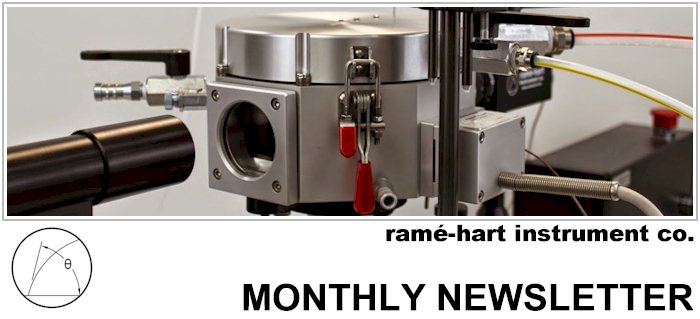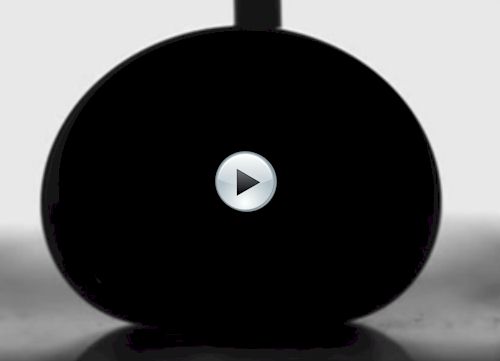|
|
|
February 2016 |
| The Cassie to Wenzel Transition |
|
Many superhydrophobic surfaces exhibit
very limited wetting due to surface roughness. Liquid deposited on these
textured surfaces sits on the top of the surface asperities in what is
referred to as the Cassie-Baxter state. In the Cassie state, there are
pockets of air trapped in the valleys of the surface below the drop. In
this state, the apparent contact angle is typically much higher than if
the liquid falls down and into the valleys in what is referred to as the
Wenzel state. See graphic below.
In some cases, a drop in the Cassie state will fall down into the surface and transition to a Wenzel state. This is often referred to as a wetting transition. When this occurs, the contact angle typically will drop noticeably.
The above video shows how quickly this transition can occur. Pay attention at 12 seconds. In addition to the contact decreasing, the three-phase line also increases in diameter. Researchers suggest that the Cassie to Wenzel transition results from a nucleation mechanism that begins at the center of the drop in what is referred to as a "mushroom state". See the center state in the topmost graphic. The wetting transition can result from external stimuli such as vibration or change in temperature, pressure or other environmental conditions. The Cassie to Wenzel transition is from a high energy state to a lower-energy state and is (almost always) irreversible. In some cases, the drop will not only penetrate the surface but will spread beyond it. Since the surface is considered absorptive due to its roughness, the spreading behavior is referred to as "hemiwicking". Researchers who design superhydrophobic surfaces are interested in tuning their surface designs to promote maximum contact angles but reduce wetting transitions. The Cassie to Wenzel transition is just one example of a behavior that happens too quickly to observe with the naked eye. There are a number of other behaviors that can happen quickly - e.g., dynamic wetting, absorption, pinning and dewetting, wicking, and oscillation. For this reason, we have upgraded our high-speed camera options. We are now pleased to announce a new SuperSpeed camera that more than triples the speed of our previous G1 Series high-speed camera. More on that below. |
| Two Million Pictures - No Errors |
| I just finished taking two million pictures. And no errors. It was part of the final testing of our new U2 Series SuperSpeed camera prior to its release this month (February 2016). The "U" in U2 refers to the USB 3.0 SuperSpeed interface which is ten times faster than USB 2.0 and over twice as fast as FireWire 800. The U2 Series camera is our second U Series camera. Our U1 Series camera is now standard on all but one of our instrument models and operates at 100 fps (frames per second). Our U2 Series camera operates at over 7 times that speed at 750 fps and is over three times the speed of our prior high-speed G1 Series camera. (G is for Gigabit interface.) Currently, the U2 Series camera is available as an upgrade kit (p/n 100-12-U2) for any new system which includes DROPimage Advanced (e.g., Models 250, 260, 290, 500, 590, and 790). We are also pleased to announce that the U2 Series 750FPS SuperSpeed Upgrade Kit is the same price as the G1 High-Speed Upgrade Kit despite its enormous increase in speed. Both upgrade kits (G1 and U2) are currently available. It may be possible to upgrade an existing instrument to use the new U2 Series camera. However, pricing will vary depending on the age of the instrument and how many components will need to be upgraded. If you are interested in a quote for a new model with the SuperSpeed U2 Series Upgrade Kit, please contact us. If you are interested in upgrading an existing instrument, contact us with the model and serial number (or a pictures) and we can work up a custom quote for you. |
|
Regards,
Carl Clegg |



